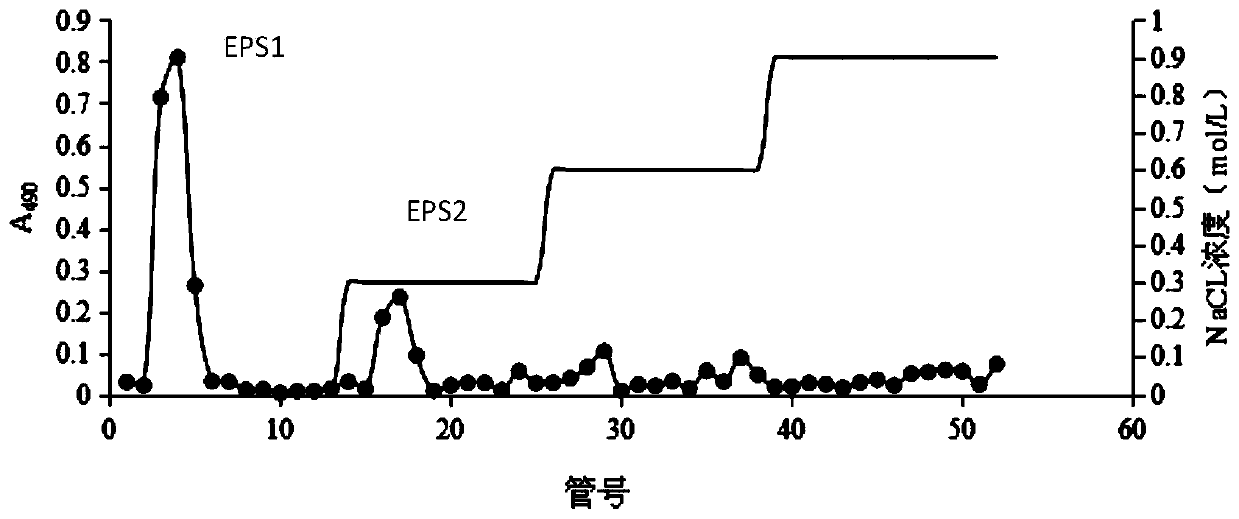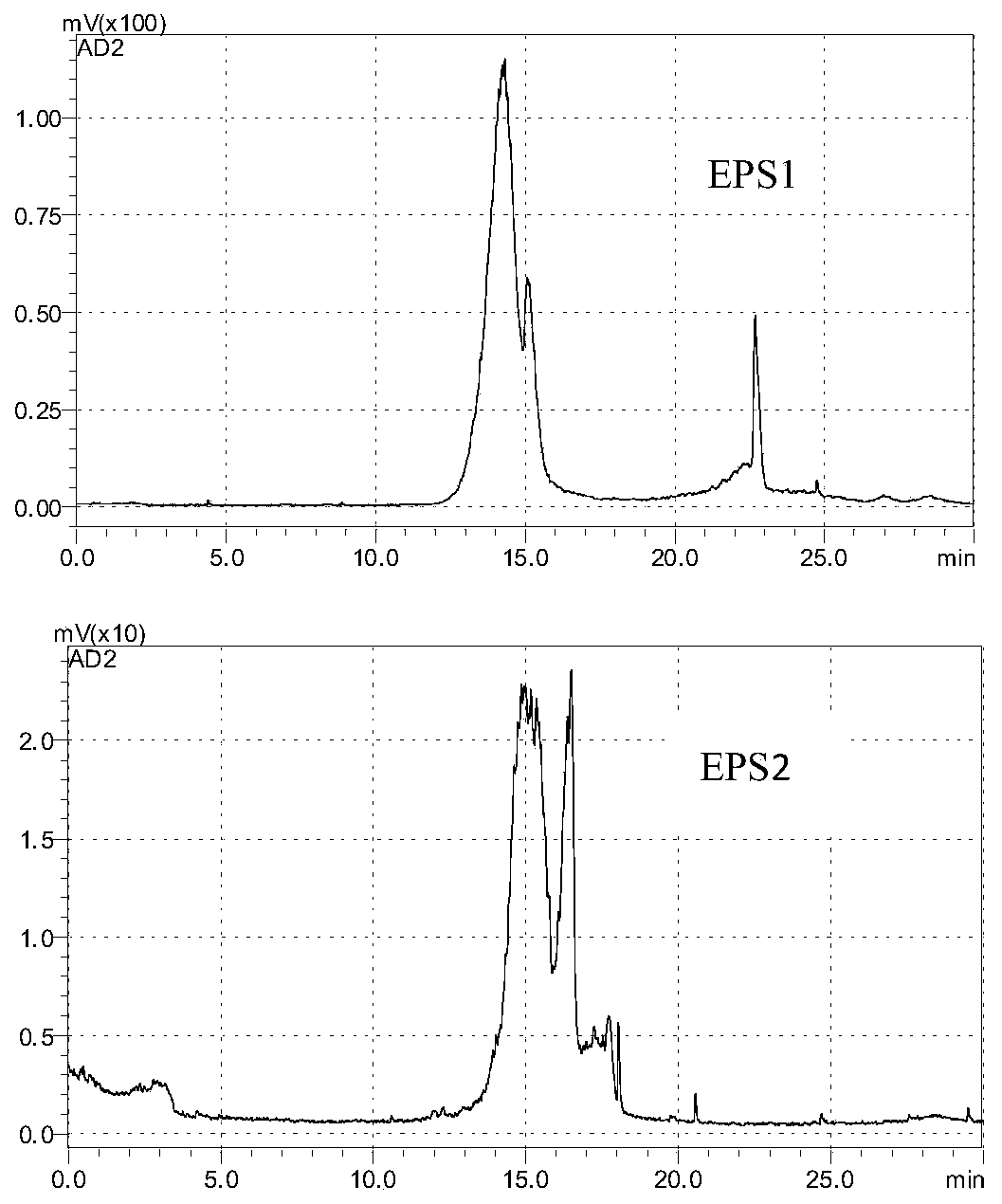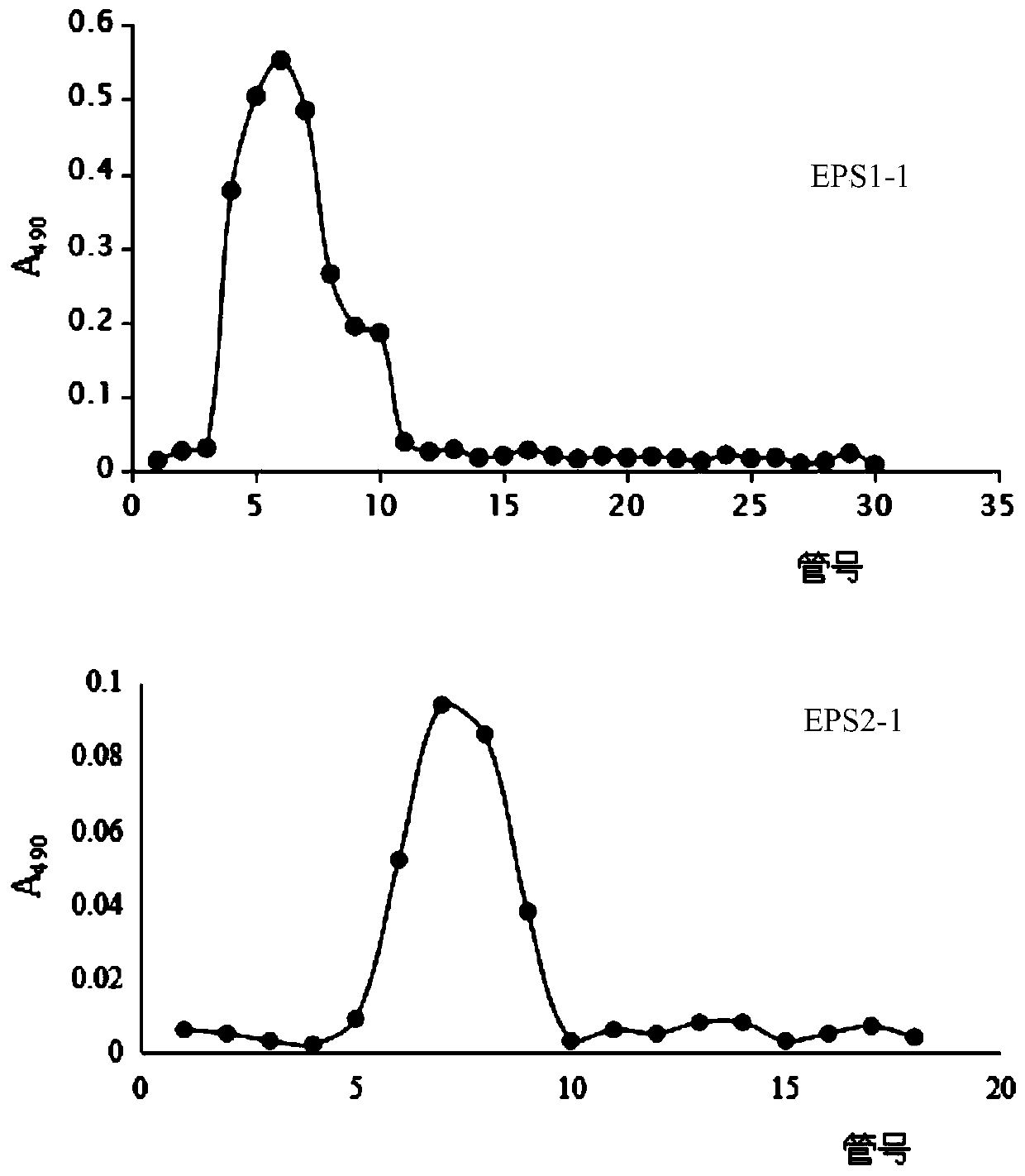Microbial exopolysaccharide capable of condensing petroleum
A technology of extracellular polysaccharides and microorganisms, applied in the field of oil pollution control, can solve pollution and other problems, and achieve the effect of good application prospects and high coagulation and degradation efficiency
- Summary
- Abstract
- Description
- Claims
- Application Information
AI Technical Summary
Problems solved by technology
Method used
Image
Examples
Embodiment 1
[0022] In this example, exopolysaccharides were extracted by using bacterial strain CS07, which is named Marinobacter maritimus in Latin literature. Classification name: Marinobacter maritimus. The strain CS07 is collected from seabed sediments in Dalian Xingang oil-polluted sea area, enriched and isolated. The described strain CS07 has been submitted for deposit, and the specific deposit information is as follows:
[0023] Name of depository unit: General Microbiology Center of China Committee for Culture Collection of Microorganisms (CGMCC);
[0024] Address of Preservation Unit: Institute of Microbiology, Chinese Academy of Sciences, No. 3, Yard No. 1, Beichen West Road, Chaoyang District, Beijing;
[0025] Deposit date: July 6, 2016;
[0026] Deposit number: CGMCC No.12739;
[0027] The morphological and physical and chemical characteristics of the strain CS07 are as follows: the strain CS07 was streaked and cultured on a solid LB medium at 15°C to a single colony, and ...
Embodiment 2
[0049] The component analysis of the exopolysaccharide obtained in Example 1 was carried out. EPS1-1(6) was placed in a screw sample bottle, 1ml of 2mol / L trifluoroacetic acid was added, the bottle was tightened, and hydrolyzed at 110°C for 10h. The hydrolyzed sample was concentrated by vacuum rotation at 60°C, and then dissolved in 500ul sterile water for later use. Adopt thin layer chromatography (TLC) method and high performance liquid chromatography (HPLC) method to analyze its component:
[0050] 1. TLC
[0051] ①Sampling: Take 10ul samples and place samples at about 1.5cm below the 10×20CM microcrystalline cellulose plate, with 5mg / L fructose, xylose, glucose, galactose, arabinose, rhamnose, and mannose as the standard Sample, the standard sample sample volume is 2.5ul.
[0052] ②Expansion layer: Put the microcrystalline cellulose plate with the sample in the layer development cylinder, use ethyl acetate: pyridine: glacial acetic acid: water = 8:5:1:1.5 (V / V) as the la...
Embodiment 3
[0074] Adopt high performance gel permeation chromatography to measure the weight average molecular weight of EPS1-1 (6), the high performance gel permeation chromatography measurement condition is as follows:
[0075] Column: Waters Ultrahydrogel TM 500(7.8×300mm, 5μm); flow rate: 1mL / min; mobile phase: Watsons distilled water; column temperature: room temperature; injection volume: 70μL; acquisition time: 60min; detector: laser detector (LS), differential light detection device (RI).
[0076] The results showed that the weight average molecular weight (Mw) of EPS1-1(6) was 26496g / mol.
[0077] Table 4 The absolute molecular weight determination results of EPS1-1(6)
[0078]
PUM
| Property | Measurement | Unit |
|---|---|---|
| Weight average molecular weight | aaaaa | aaaaa |
| Weight average molecular weight | aaaaa | aaaaa |
Abstract
Description
Claims
Application Information
 Login to View More
Login to View More - R&D Engineer
- R&D Manager
- IP Professional
- Industry Leading Data Capabilities
- Powerful AI technology
- Patent DNA Extraction
Browse by: Latest US Patents, China's latest patents, Technical Efficacy Thesaurus, Application Domain, Technology Topic, Popular Technical Reports.
© 2024 PatSnap. All rights reserved.Legal|Privacy policy|Modern Slavery Act Transparency Statement|Sitemap|About US| Contact US: help@patsnap.com










